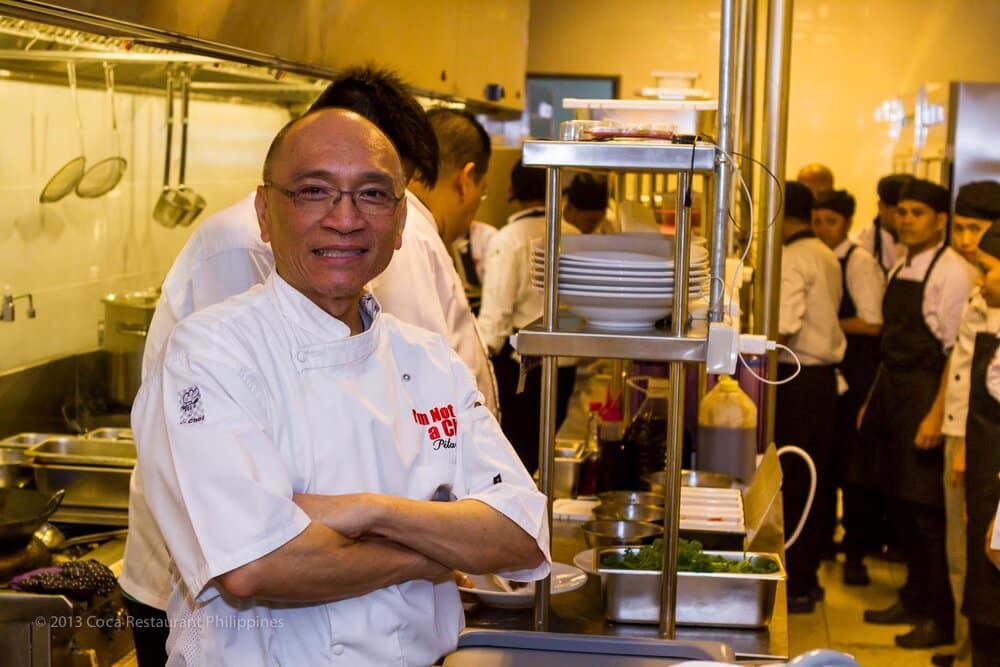The owner of the city’s high end suki chain recalls his family history as we take a few snaps of this popular slice of Bangkok dining history
By Cattleya Jaruthavee 10 June, 2010
Coca Bangkok
The story of Coca’s suki begins with crab, to sweeten the broth and ends with congee (Chinese rice porridge), which conserves the taste of the broth. The congee is made in front of you, using the broth built up over the course of your dinner.
“My mother said there are two things you must always be cautious of — your landlord and your chef,” says Mr Pitaya Phanphensophon, owner of Bangkok’s oldest hotpot restaurant, Coca.
It was the early 1950s when Pitaya’s mother, Patama, immigrated to Thailand from China’s food-proud province of Canton. Patama began work as a nanny, then the Bank of China and then to Tai Tong (Ajinomoto) as a chef, where she met Pitaya’s father, Srichai. They were married in 1956 and opened their first Cantonese hotpot restaurant in 1957, which seated six tables of four in Bangkok’s Surawong district. (See above gallery for photos.)

“My mother believed the owner should always be at the restaurant. I saw things differently when I took over in 1983,” says Coca owner Pitaya.Cantonese food was hard to come by in Bangkok, so business took off in less than a year. When success became visible, their landlord raised the rent and stole their chef in order to continue the business themselves.
Luckily, Pitaya’s parents recovered quickly and opened a larger hotpot restaurant round the corner, which changed to serve steamboats instead of hot pots in order to move away from chef dependency. Steamboats, which are now commonly called suki (after the Japanese suki yaki), have been around for thousands of years, however ingredients were originally pre-mixed in a hotpot.
DIY cooking
It was Srichai’s idea to introduce the steamboat method so that customers had the freedom to order and pay for what they wanted. This was solved by giving customers the enjoyable task of cooking the ingredients themselves. Soon Coca began catering for company staff functions as well.
“My parents used to go and buy all the food ingredients themselves every morning,” says Pittaya. “My father would go to get the meat whilst my mother went to the vegetable market.”
Coca’s famous “yin and yang” pot.Pitaya has sustained his parents’ legacy by choosing the optimum quality of ingredients, making them a high-end suki restaurant where all their meats and vegetables are hormone and pesticide free. They also encourage the natural food flavors to come out by keeping their sauce mild.
“Not only do we not go overboard on the sauce but we also use a Sriracha base rather than tofu like other suki restaurants, simply because my mother did not like tofu very much.”
“My mother believed the owner should always be at the restaurant. I saw things differently when I took over in 1983,” reflects Pitaya, who is North American educated and believes business should not come in the way of family, and vice versa. “I wanted to modernize, to make sure the company could run on its own without relatives involved at all times. It is my principle.”
Free of fees and MSG
Until the 1970s, Bangkokians had to pay an extra fee if they wanted to sit in an air-conditioned room. However Coca’s second branch in Siam Square was the first restaurant in Bangkok to do away with this fee. Due to their expansion abroad, they were also one of the first Thai-Chinese restaurants to cut MSG out of their food.
Coca’s first restaurant, on Surawong’s Soi Decho.“We believe restaurants should be treated like hospitals,” says Pitaya. With principles set straight and solid, it comes as no surprise that now in 2010 Coca has expanded to 12 restaurants in Thailand and 22 abroad and is one of the only local chain restaurants that is ISO certified.
But times haven’t been easy. The latest political slump in Thailand has put three of Coca’s restaurants out of business and Pitaya says it will cost them approximately 30 million baht to rebuild.
“What has happened is sad but we must learn from this experience and spread our eggs in different baskets by looking into opening more suburban branches, away from the city center.”
Clearly, apart from their food being ‘kou kow’ (where Coca get’s its’ name from, meaning delicious in Chinese), part of Coca’s 53 years of success is due to this essence of positivity Pitaya and his family embodies.
Getting there
Coca Restaurant
8 Soi Anumarnratchathon, Surawong Road
BTS: Saladaeng
Tel: +66 (0)2 236 9323
Cattleya Jaruthavee is a freelance photographer and writer. She is particularly interested in socio-economic/political disparities in the world and has several ongoing projects.
Read more about Cattleya Jaruthavee
Original Post:
www.travel.cnn.com/bangkok/eat/retrospect-photos-coca-bangkoks-oldest-hotpot-restaurant-464137/

